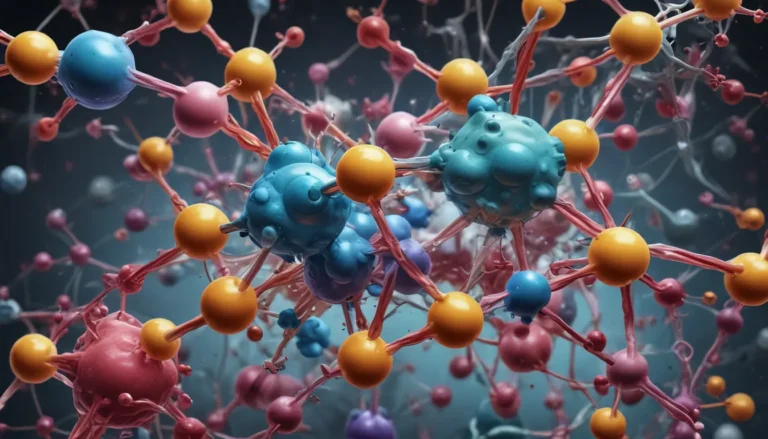A Note About Images: The images used in our articles are for illustration purposes only and may not exactly match the content. They are meant to engage readers, but the text should be relied upon for accurate information.
Faraday’s Law of Electrolysis, formulated by the renowned physicist Michael Faraday in the 1830s, is a cornerstone in the field of electrochemistry. This fundamental concept provides a quantitative relationship between the amount of electric charge passed through an electrolyte and the amount of substance produced or consumed during the electrolysis process. In this article, we will dive into 10 fascinating facts about Faraday’s Law of Electrolysis that will deepen your understanding and appreciation of its significance in the realm of science and technology.
Delving into the Discovery of Faraday’s Law
Michael Faraday’s groundbreaking work in the early 19th century revolutionized our understanding of the relationship between electricity and chemical reactions. Faraday’s Law of Electrolysis introduced a quantitative approach to studying these processes, laying the foundation for further scientific exploration.
Understanding the Importance of Electrons in Faraday’s Law
Faraday’s Law states that the amount of chemical change in an electrolytic cell is directly proportional to the amount of electric charge passed through the circuit. This principle not only provides a means to calculate substance amounts but also offers early evidence for the existence and quantization of electrons, deepening our understanding of fundamental particles.
Exploring the Practical Applications of Faraday’s Law
Faraday’s Law plays a crucial role in various industrial processes, such as metal plating and the electrolytic production of chemicals. By quantifying the amount of substance produced or consumed during electrolysis, this law provides a fundamental basis for electrochemical calculations and drives advancements in diverse sectors.
Unveiling Electrolysis and Electroplating
Faraday’s Law enables the process of electroplating, in which objects are coated with a thin layer of metal. This technique is commonly used to enhance the appearance of jewelry, improve the conductivity of electrical contacts, and protect metal surfaces from corrosion, showcasing the practical applications of Faraday’s pioneering work.
Introducing Faraday’s Constant
Faraday’s Law introduced the concept of Faraday’s constant, which represents the charge of one mole of electrons. This fundamental constant, approximately equal to 96,485 coulombs per mole, is essential in various electrochemical calculations and underpins our understanding of the quantitative aspects of electrochemistry.
Embracing Electrolysis as a Green Technology
Electrolysis, supported by Faraday’s Law, emerges as an environmentally friendly technology with significant implications for the shift towards sustainable energy sources. By enabling the production of hydrogen gas, electrolysis offers a clean and renewable fuel option, contributing to the global push for green technologies.
Unraveling Faraday’s Law in Industrial Processes
Faraday’s Law is instrumental in various industrial processes, ranging from the extraction of metals from ores to the production of chemicals like chlorine and sodium hydroxide through the electrolysis of brine. These applications underscore the indispensable role of Faraday’s Law in driving innovation and efficiency across diverse manufacturing sectors.
Examining the Relationship between Time and Charge
Faraday’s Law highlights the direct relationship between the duration of an electrolysis process and the amount of electricity that passes through the system. This correlation emphasizes the dynamic nature of electrochemical reactions and underscores the importance of time in influencing the outcomes of these processes.
Unveiling Faraday’s Law in Electrochemical Cells
Faraday’s Law provides essential insights into the functioning of electrochemical cells, such as batteries and fuel cells. By elucidating the conversion of chemical energy into electrical energy and vice versa, Faraday’s principles underpin the design and operation of these critical energy storage devices, shaping advancements in the field.
Celebrating Faraday’s Law in Fundamental Scientific Research
Beyond its practical applications, Faraday’s Law of Electrolysis serves as a catalyst for groundbreaking scientific investigations in electrochemistry. By inspiring researchers worldwide to explore and expand upon its principles, this fundamental concept continues to drive innovation and discovery in the field, unlocking new frontiers in understanding the intricate interplay between electricity and chemical reactions.
Exploring the Endless Possibilities of Faraday’s Law
In conclusion, Faraday’s Law of Electrolysis stands as a foundational principle in the realm of electrochemistry. By establishing a quantitative relationship between electric charge and chemical reactions, this law transcends traditional boundaries, offering a deep understanding of electrolytic processes and inspiring advancements in various scientific and technological domains. Through its diverse applications, from metal plating to the production of green energy sources, Faraday’s Law exemplifies the interconnectedness of physics and chemistry, guiding us towards a brighter and more sustainable future.
Trust in the enduring legacy of Faraday’s Law as you embark on a journey of discovery and innovation in the dynamic world of electrochemistry. Let the principles elucidated by Michael Faraday inspire you to explore new horizons, challenge existing paradigms, and contribute to the ever-evolving tapestry of scientific knowledge. Embrace the wonder and possibilities of Faraday’s Law as you continue to unravel the mysteries of electricity, chemistry, and the profound connections that shape our world.






